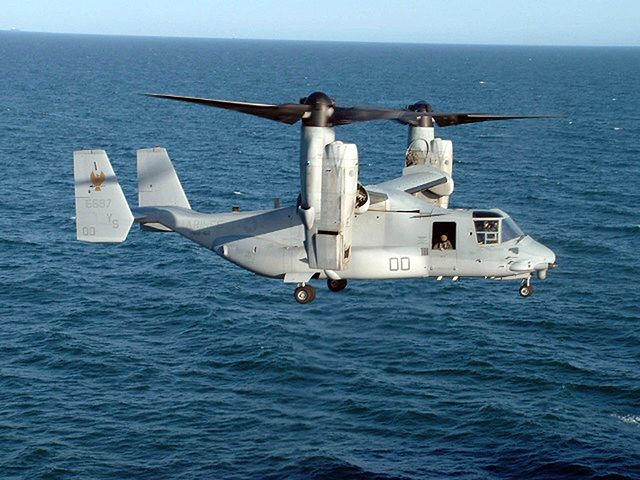
The Bell Boeing’s V-22 Osprey aircraft has successfully completed initial aerial refuelling testing and demonstrated its capability.
During the trials conducted over north Texas, US, the tiltrotor aircraft fitted with the aerial refuelling system, safely deployed, held stable and retracted the refuelling drogue as an F/A-18C and an F/A-18D Hornet flew alongside it.
The air refuelling capability further improves versatility of the tiltrotor aircraft in combat, humanitarian and ship-based operations.
Bell Boeing V-22 programme director, Vince Tobin, said the V-22 Osprey’s aerial refuelling tanker capability allows operators to conduct a wider variety of missions with greater flexibility and autonomy.
"This will save time and money by maximising the efficient use of aircraft and personnel," Tobin said.
Designed to perform multiple missions with a long-range, high-speed cruise performance, the Bell-Boeing V-22 Osprey is powered by twin Rolls-Royce AE 1107C-Liberty engines and has maximum and cruise speeds of 565km/h and 510km/h respectively.
The tilt-rotor aircraft is being developed in configurations such as combat assault and support MV-22 for the USMC and the US Army, the long-range special operations CV-22 for US Special Operations Command (US SOCOM) and the US Navy HV-22 for combat search-and-rescue, special warfare and fleet logistic support.
Armed with an M240G 7.62mm machine gun and ATK AN/AAR-47 missile warning system, the aircraft features both vertical take off and landing (VTOL), short take off and landing (STOL) capabilities.
The company is planning to conduct further tests for the aircraft in a fuel-receiving position directly behind the V-22 by connecting receiver aircraft with the refuelling drogue and then refuel a variety of aircraft in flight.
Image: Marine corps MV-22 Osprey flying over sea. Photo: courtesy of US Navy.








